Starliner: Nasa to fly new craft to space station
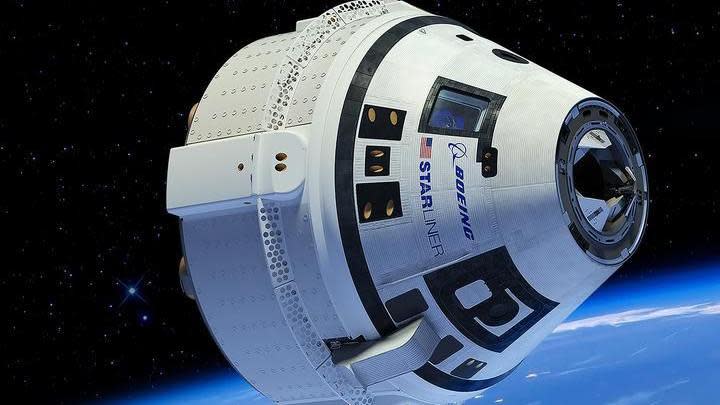
Two Nasa astronauts are due to head for the International Space Station aboard a new spacecraft.
Boeing’s Starliner will blast off from Cape Canaveral in Florida, in its first crewed test flight.
The mission has been delayed for several years because of setbacks in the spacecraft's development.
If it is successful, it will become the second private firm able to provide crew transport to and from the ISS, alongside Elon Musk's SpaceX.
Nasa no longer wants to own and operate such vehicles, preferring now to buy the service from the commercial sector.
The scheduled lift-off is set for 22:34 local time on Monday (03:34 BST Tuesday).
But the launch is also a moment of jeopardy for Boeing. Its airline business is under pressure because of a series of accidents. And the firm’s space sector is also under scrutiny following difficulties in developing Starliner itself.
“It’s a really big day for Boeing", commented Dr Simeon Barber, a space scientist at the Open University.
“The company has been working on the spacecraft for so long, they have had a few problems with the test flights and there’s a lot riding on this”.
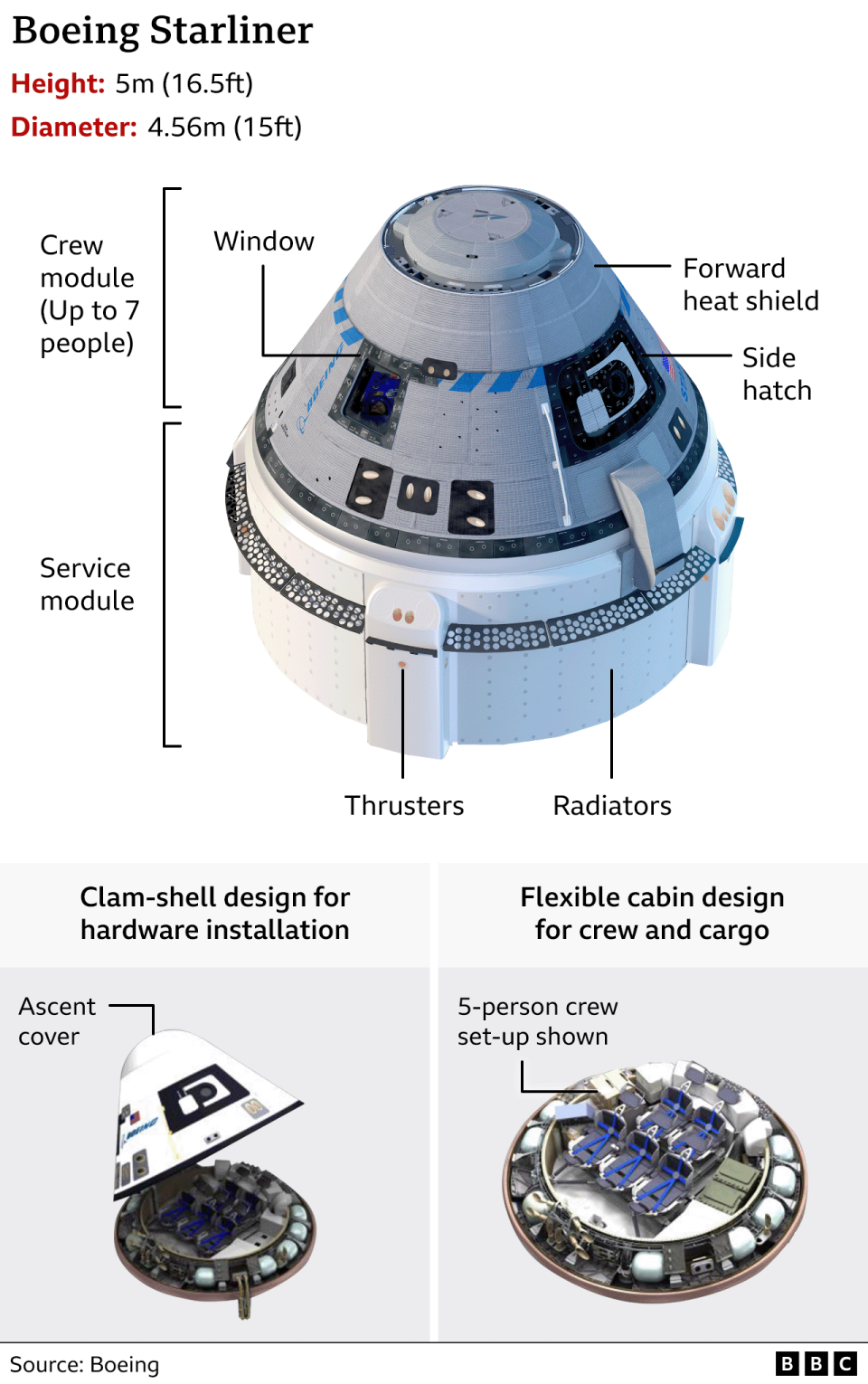
Starliner was originally due to have its first uncrewed test flight in 2015 but this was delayed until 2019. When it did occur, software glitches led to an internal clock malfunction, resulting in thrusters over-firing. So much fuel was consumed that the capsule couldn't reach the space station.
A second attempt was planned in August 2021 but delayed again until May 2022. An issue with the propulsion system was blamed. When Starliner did finally get off Earth, it managed to complete its full mission but concerns were then later raised about the performance of some thrusters and the craft's cooling system.
Correcting these faults and additional issues to do with the safety of wiring and parachutes pushed the first crewed demonstration back to where we are today.
Nasa and Boeing would not have given the go ahead for astronauts to fly the mission unless they were certain all the glitches had been sorted out. And the launch will be aborted if there is any sign of problems with the spacecraft.
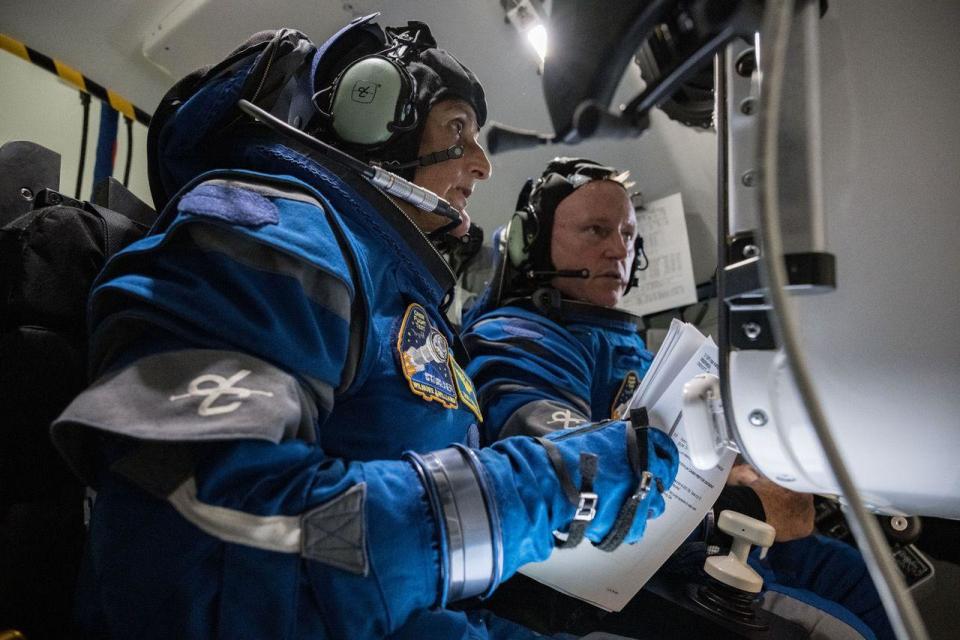
At a pre-flight news conference, a reporter put it to the Navy-trained astronauts that the setbacks must make their flight "scary" for friends and family.
Barry "Butch" Wilmore said it would be wrong to describe the various technical issues as "setbacks".
"We'd call them steps forward. We find an issue and rectify that and we have articulated that to our families so that they understand that," he added.
And Sunita "Suni" Williams, who will pilot the spacecraft, commented: "We are all here because we are all ready. Our friends and family have heard about it and we've talked about it and they are happy and proud that we are part of the process to fix it all."
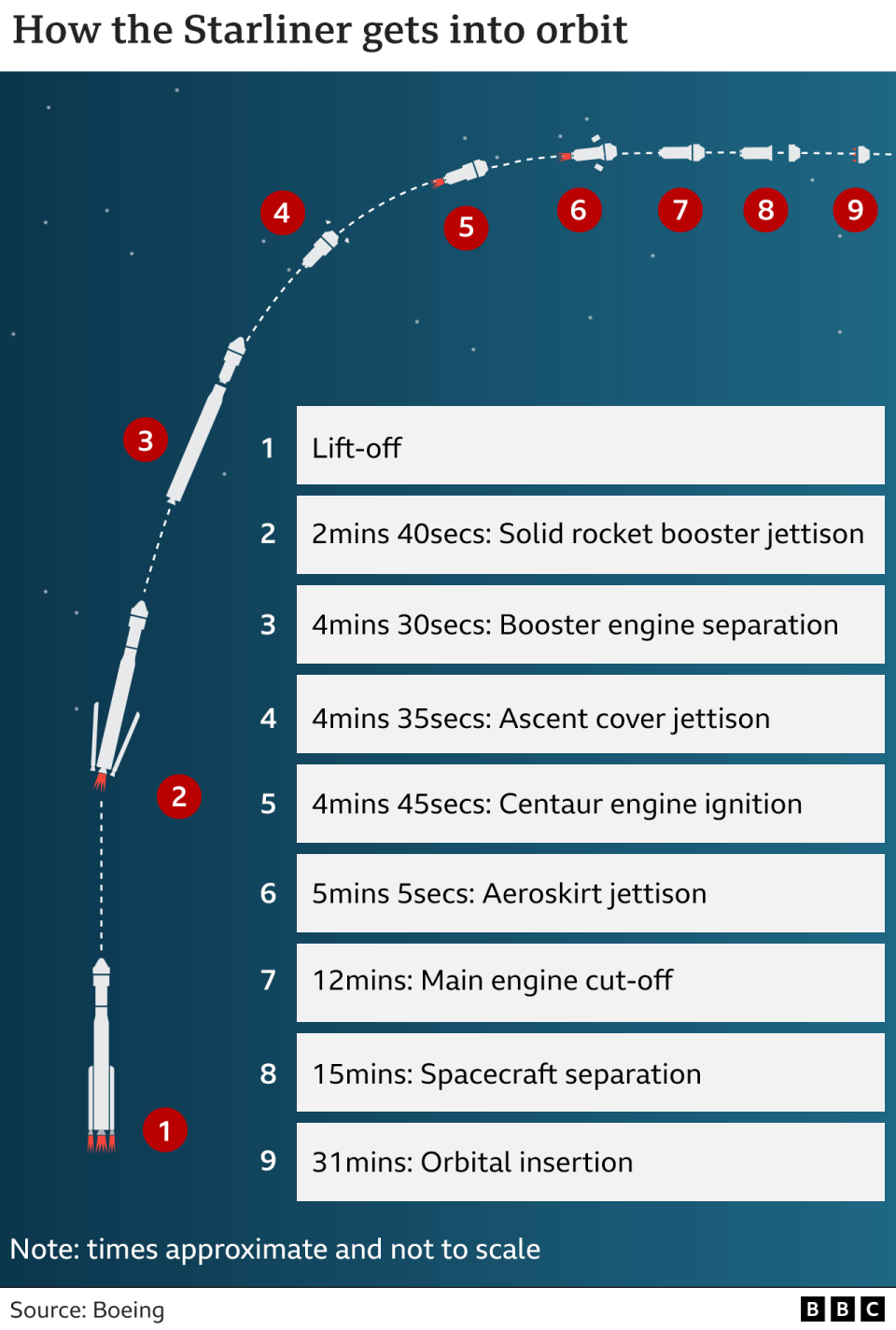
When Nasa announced that SpaceX and Boeing would take over from the old space shuttles, it gave them both a similar contract, one that would bring their capsules into service and then pay for six operational missions. The SpaceX contract was worth $2.6bn while Boeing got $4.2bn. SpaceX was able to fly its crew flight test in 2020. This means Boeing is four years behind. The company has also spent a lot of money to put things right.
Dr Barber said SpaceX and other start-ups had a new approach to technology development that led to greater innovation.
"You have a traditional space company (in Boeing) that has been around a long time and does things in a certain way and you have a new space company which has done things in a different way, by building, testing, crashing, learning and then building again and so their development cycle is very rapid," he told BBC News.
Boeing’s commercial crew programme manager Mark Nappi told reporters at a news conference that finding faults in test flights was a normal part of the process in developing a new spacecraft.
“Design and development has constant ups and downs, but the overall slope is always up. So that is where we have got to today. We are basically at the top of that slope”.
The arrival of Boeing's spacecraft into service will mean competition for SpaceX which should bring down costs, according to Libby Jackson, who is the head of space exploration for the UK Space Agency.
"That is really important not just for Nasa, but for other space agencies, such as the UK Space Agency, because we are spending the taxpayers' money getting our astronauts to the ISS and we want the best value for money," she said.
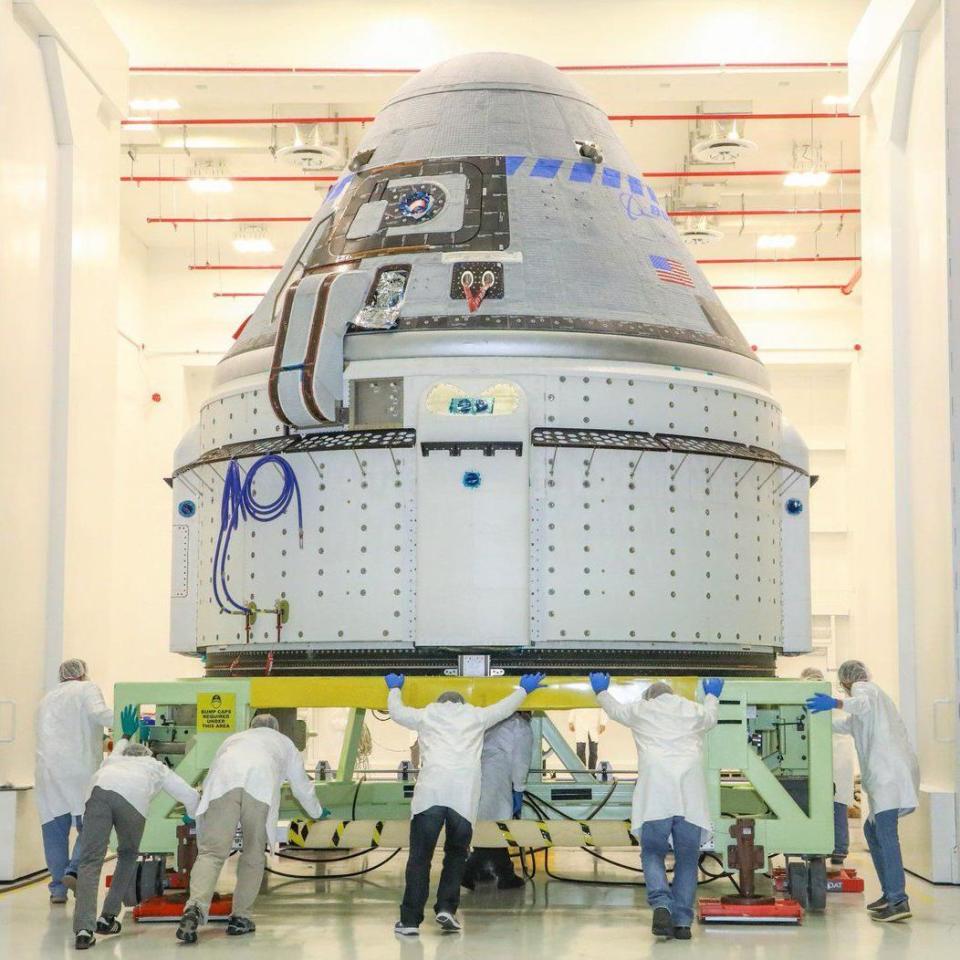
Starliner is 5m tall and 4.6m wide (16.5ft by 15ft), when attached to its rear service module. It's wider than the capsule used in the Apollo missions. There's room for up to seven astronauts, although it will probably fly routinely with just four. It's intended to be reusable and fly up to 10 times.
The spacecraft launch at in the early hours of Tuesday morning should see it cross the southwest of the UK about 20 minutes after lift-off.
During the journey to the ISS, the crew will test seats, assess onboard life-support and navigation systems, as well as evaluating the system that moves cargo into the ISS.
They will also be testing brand new space suits. Wilmore and Williams will be wearing Boeing's blue suit, which is about 40% lighter than earlier generations of spacesuits worn by American astronauts - and more flexible. The suit also has touchscreen-sensitive gloves, so the astronauts can work with tablets in the spacecraft.
Starliner will be docked with the ISS for around 10 days before returning to Earth. Unlike re-entries by previous US capsules that splashed down in the sea, Starliner will touch down on land somewhere in the southwestern United States. A heatshield and parachutes will slow the descent before airbags open to soften the moment of impact with the ground.
If all goes to plan, Starliner will be certified for regular crew missions to the ISS. Its next launch – most probably early next year - will carry four astronauts as well as equipment and supplies.
There have been more than a hundred crewed missions to the ISS since the start of its construction in 1998. But, according to Caleb Henry, of the US-based space consultancy firm Quilty, the Starliner launch marks an important moment in the history of spaceflight.
"We are now entering a new era of human exploration," he told BBC News.
"What is exciting is the growing role of the private sector. It's increasing the frequency of space travel, which is creating new opportunities."

